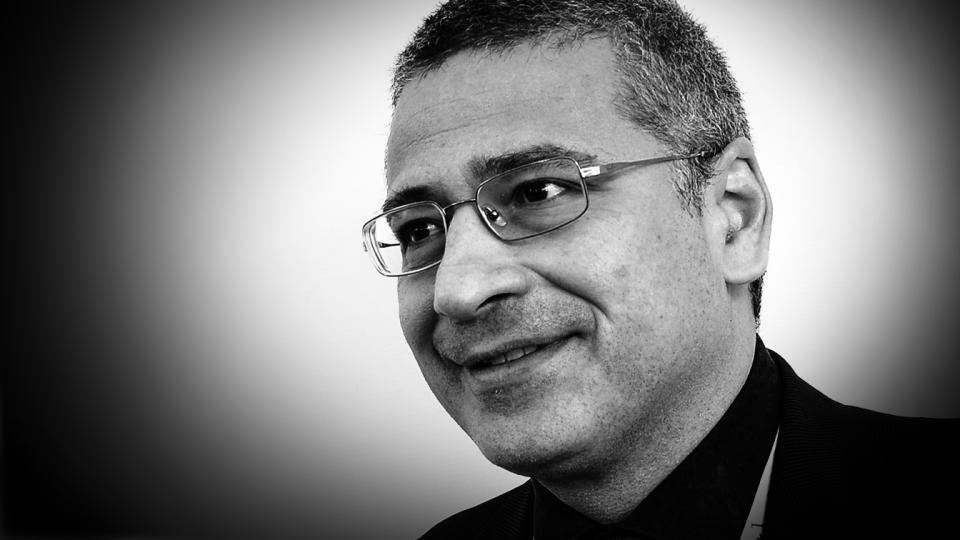Top coronavirus model predicts 100,000 dead by the end of the pandemic's 1st wave this summer
By the end of the coronavirus’s “first wave” this summer, America will likely have buried close to 100,000 victims of the disease, with as many as 9 million people having become infected, according to Alessandro Vespignani, the director of the Network Science Institute at Northeastern University. The elite research lab, which has gained international notice for its pandemic modeling, also concluded that at least 80,000 to 90,000 Americans will be dead of coronavirus complications by mid-May.
At least 60,207 Americans had died of coronavirus by Wednesday afternoon, according to the Johns Hopkins Coronavirus Resource Center — more than the estimated 58,000 Americans killed in the Vietnam War.
Vespignani told the Yahoo News “Skullduggery” podcast that his modeling is much higher than official estimates because of what he has described as “invisible chains of transmission” of the virus throughout the United States in January and February — before top Trump administration officials grasped the severity of the crisis. By tracking travel numbers and other data, Vespignani said he and his associates have been able to trace the course of potential spreaders who had returned to the country from China and other nations where the virus had spread.
He said the aggressive social distancing measures most Americans have undertaken doubtless saved several hundred thousand lives. New cases of COVID-19, the disease that results from exposure to the coronavirus, have plateaued as a result, Vespignani said. But he warned that reopening public spaces too soon or without adequate testing and contact tracing infrastructure in place could lead to a dramatic resurgence in infections and deaths.

“You have to always keep in mind that without those aggressive social distancing measures we would have an exponential increase,” Vespignani told “Skullduggery” hosts Michael Isikoff and Daniel Klaidman. He said that about a half-million people would be dead by now if the virus had been allowed to spread without governments taking steps to control it.
Vespignani said he is hopeful that the dreaded second wave of infections expected in the fall and winter will require less severe social distancing restrictions and overall hardship. But he was clear that without adequate investment in testing and contact tracing the second wave will not be any less serious and could be far worse.
“What we’re living now — this is one battle — it’s not the war,” he said. “The more we are prepared, the better we will fight and the less problems we will have and the less we will have to suffer.”
The computational epidemiology and network analysis Vespignani’s team relies on to reach its conclusions are data-driven. The Northeastern lab is one of several advising officials who are weighing when and how the country should reopen. Vespignani’s team previously analyzed the Chinese travel ban on Wuhan and determined it bought a few days of time in mainland China and two to three weeks elsewhere in the world but did not significantly curtail the spread of the disease. He described his lab’s model as a “synthetic world” built using real commuting, flight, transit, educational and population data.
“It’s like the weather forecast, but for infectious diseases,” he said. “You collect a large amount of data on population, where we live, what is the age structure of the population, and then how we travel, how we take international flights, domestic flights, how we commute to work and the schools,” Vespignani explained.
Once his team has used the real-world data to form its “synthetic world,” it maps infection rates on top and watches the infection spread within the simulation, which is able to track the movements of billions of simulated individuals as they would move in their ordinary lives. While the disease spreads in the synthetic world, a projected path for the epidemic takes shape in the computer model.
The model relies on accurate data just as reopening will require an accurate sense of where the disease is and how it is spreading. The economy cannot safely reopen, he said, unless states have the ability to immediately test, isolate and contact-trace for those who fall ill. Vespignani said that because of the coronavirus’s long incubation period and asymptomatic carriers’ ability to “start those invisible chains of transmission,” this infrastructure must be in place first.
“Any surveillance system for diseases only captures the tip of the iceberg,” he said, before adding that achieving testing and contact tracing on a large scale will require “building a kind of war economy against this disease.”
Vespignani said the estimated 250,000 daily tests now being administered in the U.S. are not enough for reopening with optimal safety. A Harvard study has said a “safe social reopening” would require 5 million tests to be administered a day, a number the White House says will be difficult to achieve. At a Monday briefing, Vice President Mike Pence, who is spearheading the administration’s coronavirus response, said he believes there are enough tests available now for states to enter the first of three phases the White House suggests for reopening. While Vespignani did not provide an exact number of daily tests to target, he said a very robust testing system will be required to open the country back up.
“You need to chase the disease in all places as soon as you see any sign of infections and death,” he said. “What we need to understand is how to go back to normal with a safety net. I tell everybody to be patient because we need to build this infrastructure that will allow, in the future, not to have the invisible spread.”
Download or subscribe on iTunes: “Skullduggery” from Yahoo News
_____
Click here for the latest coronavirus news and updates. According to experts, people over 60 and those who are immunocompromised continue to be the most at risk. If you have questions, please refer to the CDC’s and WHO’s resource guides.
Read more:


